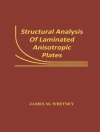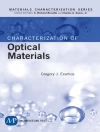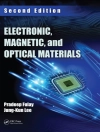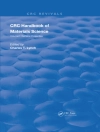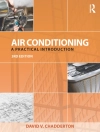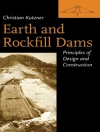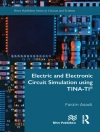Fabrication of Metallic Pressure Vessels
A comprehensive guide to processes and topics in pressure vessel fabrication
Fabrication of Metallic Pressure Vessels delivers comprehensive coverage of the various processes used in the fabrication of process equipment. The authors, both accomplished engineers, offer readers a broad understanding of the steps and processes required to fabricate pressure vessels, including cutting, forming, welding, machining, and testing, as well as suggestions on controlling costs.
Each chapter provides a complete description of a specific fabrication process and details its characteristics and requirements. Alongside the accessible and practical text, you’ll find equations, charts, copious illustrations, and other study aids designed to assist the reader in the real-world implementation of the concepts discussed within the book.
You’ll find numerous appendices that include weld symbols, volume and area equations, pipe and tube dimensions, weld deposition rates, lifting shackle data, and more.
In addition to detailed discussions of cutting, machining, welding, and post-weld heat treatments, readers will also benefit from the inclusion of:
- A thorough introduction to construction materials, including both ferrous and nonferrous alloys
- An exploration of layout, including projection and triangulation, material thickness and bending allowance, angles and channels, and marking conventions
- A treatment of material forming, including bending versus three-dimensional forming, plastic theory, forming limits, brake forming, roll forming, and tolerances
- Practical discussions of fabrication, including weld preparation, forming, vessel fit up and assembly, correction of distortion, and transportation of vessels
Perfect for new and established engineers, designers, and procurement personnel working with process equipment or in the fabrication field, Fabrication of Metallic Pressure Vessels will also earn a place in the libraries of students in engineering programs seeking a one-stop resource for the fabrication of pressure vessels.
Содержание
Preface xvii
Acknowledgments xix
1 Introduction 1
1.1 Introduction 1
1.2 Fabrication Sequence 1
1.3 Cost Considerations 5
1.3.1 Types of costs 5
1.3.2 Design choices 6
1.3.3 Shipping 11
1.3.4 General approach to cost control 12
1.4 Fabrication of Nonnuclear Versus Nuclear Pressure Vessels 12
1.5 Units and Abbreviations 13
1.6 Summary 14
2 Materials of Construction 15
2.1 Introduction 15
2.2 Ferrous Alloys 16
2.2.1 Carbon steels (Mild steels) 16
2.2.2 Low alloy steels (Cr–Mo steels) 18
2.2.3 High alloy steels (stainless steels) 19
2.2.4 Cost of ferrous alloys 20
2.3 Nonferrous Alloys 20
2.3.1 Aluminum alloys 20
2.3.2 Copper alloys 22
2.3.3 Nickel alloys 30
2.3.4 Titanium alloys 30
2.3.5 Zirconium alloys 30
2.3.6 Tantalum alloys 32
2.3.7 Price of nonferrous alloys 33
2.4 Density of Some Ferrous and Nonferrous Alloys 34
2.5 Nonmetallic Vessels 35
2.6 Forms and Documentation 35
2.7 Miscellaneous Materials 38
2.7.1 Cast iron 38
2.7.2 Gaskets 38
References 43
3 Layout 44
3.1 Introduction 44
3.2 Applications 44
3.3 Tools and Their Use 45
3.4 Layout Basics 45
3.4.1 Projection 46
3.4.2 Triangulation 46
3.5 Material Thickness and Bending Allowance 49
3.6 Angles and Channels 50
3.7 Marking Conventions 52
3.8 Future of Plate Layout 54
Reference 54
4 Material Forming 55
4.1 Introduction 55
4.1.1 Bending versus three-dimensional forming 55
4.1.2 Other issues 55
4.1.3 Plastic Theory 56
4.1.4 Forming limits 62
4.1.5 Grain direction 64
4.1.6 Cold versus hot forming 64
4.1.7 Spring back 64
4.2 Brake Forming (Angles, Bump-Forming) 65
4.2.1 Types of dies 67
4.2.2 Brake work forming limits 68
4.2.3 Crimping 68
4.2.4 Bending of pipes and tubes 69
4.2.5 Brake forming loads 70
4.3 Roll Forming (Shells, Reinforcing Pads, Pipe/Tube) 70
4.3.1 Pyramid rolls 70
4.3.2 Pinch rolls 71
4.3.3 Two-roll systems 71
4.3.4 Rolling radius variability compensation 72
4.3.5 Heads and caps 72
4.3.6 Hot forming 74
4.4 Tolerances 74
4.4.1 Brake forming tolerances 75
4.4.2 Roll forming tolerances 76
4.4.3 Press forming tolerances 76
4.4.4 Flanging tolerances 76
Reference 76
5 Fabrication 77
5.1 Introduction 77
5.2 Layout 77
5.3 Weld Preparation 78
5.3.1 Hand and automatic grinders 78
5.3.2 Nibblers 78
5.3.3 Flame cutting 79
5.3.4 Boring mills 79
5.3.5 Lathes 80
5.3.6 Routers 80
5.3.7 Other cutter arrangements 82
5.4 Forming 82
5.5 Vessel Fit Up and Assembly 83
5.5.1 The fitter 84
5.5.2 Fit up tools 84
5.5.3 Persuasion and other fit up techniques 84
5.5.4 Fixturing 85
5.5.5 Welding fit up 86
5.5.6 Weld shrinkage 88
5.5.7 Order of assembly 89
5.6 Welding 90
5.6.1 Welding position 90
5.6.2 Welding residual stresses 90
5.6.3 Welding positioners, turning rolls, column and boom weld manipulators 91
5.7 Correction of Distortion 94
5.8 Heat Treatment 94
5.8.1 Welding preheat 95
5.8.2 Interpass temperature 95
5.8.3 Post weld heat treatment 96
5.9 Post-fabrication Machining 96
5.10 Field Fabrication – Special Issues 96
5.10.1 Exposure to the elements 97
5.10.2 Staging area 97
5.10.3 Tool and equipment availability 98
5.10.4 Staffing 98
5.10.5 Material handling 98
5.10.6 Energy sources 99
5.10.7 PWHT 99
5.10.8 Layout 100
5.10.9 Fit up 100
5.10.10 Welding 100
5.11 Machining 101
5.12 Cold Springing 101
6 Cutting and Machining 102
6.1 Introduction 102
6.2 Common Cutting Operations for Pressure Vessels 102
6.3 Cutting Processes 103
6.3.1 Plate cutting 103
6.3.2 Pipe, bar, and structural shape cutting 108
6.4 Common Machining Functions and Processes 110
6.5 Common Machining Functions for Pressure Vessels 111
6.5.1 Weld preparation 111
6.5.2 Machining of flanges 111
6.5.3 Tubesheets 112
6.5.4 Heat exchanger channels 113
6.5.5 Heat exchanger baffles 113
6.6 Setup Issues 114
6.7 Material Removal Rates 116
6.7.1 Feed 116
6.7.2 Speed 116
6.7.3 Depth of cut 116
6.8 Milling 117
6.9 Turning and Boring 119
6.10 Machining Centers 120
6.11 Drilling 120
6.12 Tapping 121
6.13 Water Jet Cutting 122
6.14 Laser Machining 123
6.15 Reaming 123
6.16 Electrical Discharge Machining, Plunge and Wire 123
6.17 Electrochemical Machining 124
6.18 Electron Beam Machining 124
6.19 Photochemical Machining 124
6.20 Ultrasonic Machining 125
6.21 Planing and Shaping 125
6.22 Broaching 125
6.23 3D Printing 125
6.24 Summary 126
Reference 126
7 Welding 127
7.1 Introduction 127
7.2 Weld Details and Symbols 127
7.2.1 Single fillet welds 128
7.2.2 Double fillet welds 128
7.2.3 Intermittent fillet welds 128
7.2.4 Single-bevel butt welds 129
7.2.5 Double-bevel butt welds 129
7.2.6 J-groove or double J-groove welds 129
7.2.7 Backing strips 131
7.2.8 Consumables 131
7.2.9 Tube-to-tubesheet welds 131
7.2.10 Weld symbols 131
7.3 Weld Processes 132
7.3.1 Diffusion welding (DFW) 135
7.3.2 Electron beam welding (EBW) 135
7.3.3 Electrogas welding (EGW) 136
7.3.4 Electroslag welding (ESW) 136
7.3.5 Flux-cored arc welding (FCAW) 137
7.3.6 Flash welding 137
7.3.7 Friction stir welding (FSW) 137
7.3.8 Gas metal-arc welding (GMAW) 138
7.3.9 Gas tungsten-arc welding (GTAW) 138
7.3.10 Laser beam welding (LBW) 139
7.3.11 Orbital welding 140
7.3.12 Oxyfuel gas welding (OFW) 140
7.3.13 Plasma-arc welding (PAW) 141
7.3.14 Resistance spot welding (RSW) 141
7.3.15 Resistance seam welding (RSEW) 142
7.3.16 Submerged-arc welding (SAW) 142
7.3.17 Shielded metal-arc welding (SMAW) 142
7.3.18 Stud welding 143
7.4 Weld Preheat and Interpass Temperature 143
7.5 Post Weld Heat Treating 143
7.6 Welding Procedures 143
7.7 Control of Residual Stress and Distortion 144
7.8 Material Handling to Facilitate Welding 145
7.9 Weld Repair 145
7.10 Brazing 145
7.10.1 Applications 145
7.10.2 Filler metal 145
7.10.3 Heating 145
7.10.4 Flux 145
7.10.5 Brazing procedures 146
Reference 146
8 Welding Procedures and Post Weld Heat Treatment 147
8.1 Introduction 147
8.2 Welding Procedures 147
8.3 Weld Preparation Special Requirements 153
8.4 Weld Joint Design and Process to Reduce Stress and Distortion 156
8.4.1 Reduced heat input 156
8.4.2 Lower temperature differential 156
8.4.3 Choice of weld process 156
8.4.4 Weld configuration and sequencing 157
8.5 Weld Preheat and Interpass Temperature 157
8.6 Welder Versus Welding Operator 158
8.6.1 Welders 158
8.6.2 Welding operators 158
8.6.3 Differences in qualifications 159
8.7 Weld Repair 159
8.7.1 Slag inclusion during welding 159
8.7.2 Surface indications after cooling of welds 159
8.7.3 Delayed hydrogen cracking after welding 159
8.7.4 Cracks occurring subsequent to PWHT 160
8.8 Post Weld Heat Treating 160
8.8.1 PWHT of carbon steels 160
8.8.2 PWHT of low alloy steels 161
8.8.3 Some general PWHT requirements for carbon steels and low alloy steels 161
8.8.4 PWHT of stainless steel 162
8.8.5 PWHT of nonferrous alloys 162
8.9 Cladding, Overlay, and Loose Liners 162
8.9.1 Cladding 162
8.9.2 Weld overlay 163
8.9.3 Loose liners 164
8.10 Brazing 164
8.10.1 Applications 165
8.10.2 Filler metal 165
8.10.3 Heating 165
8.10.4 Flux 166
8.10.5 Brazing procedures 166
Reference 166
9 Fabrication of Pressure Equipment Having Unique Characteristics 167
9.1 Introduction 167
9.2 Heat Exchangers 167
9.2.1 U-tube heat exchangers 169
9.2.2 Fixed heat exchangers 170
9.2.3 Floating head heat exchangers 170
9.2.4 Attachment of tubes-to-tubesheets and tubes-to-headers 170
9.2.5 Expansion joints 176
9.2.6 Assembly of heat exchangers 178
9.3 Dimpled Jackets 180
9.4 Layered Vessels 181
9.4.1 Introduction 181
9.4.2 Fabrication of layered shells 181
9.5 Rectangular Vessels 187
9.6 Vessels with Refractory and Insulation 188
9.7 Vessel Supports 190
9.8 Summary 191
References 192
10 Surface Finishes 193
10.1 Introduction 193
10.2 Types of Surface Finishes 193
10.2.1 Surface characteristics, unfinished 194
10.2.2 Passivation 195
10.2.3 Applied coatings 196
Reference 199
11 Handling and Transportation 200
11.1 Introduction 200
11.2 Handling of Vessels and Vessel Components Within the Fabrication Plant 200
11.3 Transportation of Standard Loads 202
11.4 Transportation of Heavy Vessels 204
11.4.1 Handling heavy vessels using specialty cranes 204
11.4.2 Shipping by truck 204
11.4.3 Shipping by rail 208
11.4.4 Shipping by barge or ship 212
11.4.5 Shipping by air 215
11.5 Summary 216
12 ASME Code Compliance and Quality Control System 217
12.1 Need for ASME Code Compliance 217
12.2 What the ASME Code Provides 217
12.3 Fabrication in Accordance with the ASME Code 217
12.4 ASME Code Stamped Vessels 218
12.4.1 Design calculations 218
12.4.2 Fabrication drawings 218
12.4.3 Material mill test reports 218
12.4.4 WPS for the vessel welds 219
12.4.5 Records of nondestructive (NDE) examination 219
12.4.6 Record of PWHT 219
12.4.7 Record of hydrotesting 220
12.4.8 Manufacturer’s Data Report, U-1 Form 220
12.4.9 Manufacturer’s Partial Data Report, U-2 form 222
12.4.10 Name plate 222
12.5 Authorized Inspector and Authorized Inspection Agency 224
12.6 Quality Control System for Fabrication 224
12.6.1 Organizational chart 225
12.6.2 Authority and responsibility 225
12.6.3 Quality control system 225
12.6.4 Design and drawing control 225
12.6.5 Material control 225
12.6.6 Production control 225
12.6.7 Inspection 225
12.6.8 Hydrostatic and pneumatic testing 225
12.6.9 Code stamping 226
12.6.10 Discrepancies and nonconformances 226
12.6.11 Welding 226
12.6.12 Nondestructive examination 226
12.6.13 Heat treatment control 226
12.6.14 Calibration of measuring and test equipment 226
12.6.15 Records retention 226
12.6.16 Handling, storage, and shipping 226
12.7 Additional Stamps Required for Pressure Vessels 226
12.7.1 National Board stamping, NB 227
12.7.2 Jurisdictional stamping 227
12.7.3 User stamping 227
12.7.4 Canadian Registration Numbers 227
12.8 Non-Code Jurisdictions 227
12.9 Temporary Shop Locations 228
Reference 229
13 Repair of Existing Equipment 230
13.1 Introduction 230
13.2 National Board Inspection Code, NBIC, NB-23 231
13.2.1 Repairs 231
13.2.2 Alterations 232
13.2.3 Reratings 232
13.2.4 Post weld heat treating of repaired components 232
13.2.5 Hydrostatic or pneumatic testing of repaired vessels 234
13.3 ASME Post Construction Code, PCC-2 236
13.3.1 External weld buildup to repair internal thinning 236
13.3.2 Full encirclement steel reinforcing sleeves for pipes in corroded areas 237
13.3.3 Welded hot taps 238
13.4 API Pressure Vessel Inspection Code, API-510 241
13.5 API 579/ASME FFS-1 Fitness-For-Service Code 242
13.6 Miscellaneous Repairs 242
13.6.1 Removal of seized nuts 243
13.6.2 Structural supports and foundation 243
References 244
Appendix A Units and Conversion Factors 245
Appendix B Welding Symbols 247
Appendix C Weld Process Characteristics 251
Appendix D Weld Deposition 254
Appendix E Shape Properties 257
Appendix F Pipe and Tube Dimensions and Weights 263
Appendix G Bending and Expanding of Pipes and Tubes 278
Appendix H Dimensions of Some Commonly Used Bolts and Their Required Minimum Spacing 286
Appendix I Shackles 288
Appendix J Shears, Moments, and Deflections of Beams 295
Appendix K Commonly Used Terminology 299
Index 304
Об авторе
Owen R. Greulich is active on the High Pressure Task Group of the American Society of Mechanical Engineers’ Process Piping Code Committee and the American Institute of Aeronautics and Astronautics (AIAA) Aerospace Pressure Vessel Committee. He previously served as Pressure and Energetic Systems Safety Manager in the Office of Safety and Mission Assurance at NASA Headquarters, responsible for the safety of pressure and vacuum systems.
Maan H. Jawad is President of Global Engineering & Technology in the United States. He was previously on the Board of Directors and Director of Engineering of the Nooter Corporation. He is active on various ASME Codes and Standards committees and the author of numerous books and publications related to pressure vessels.



